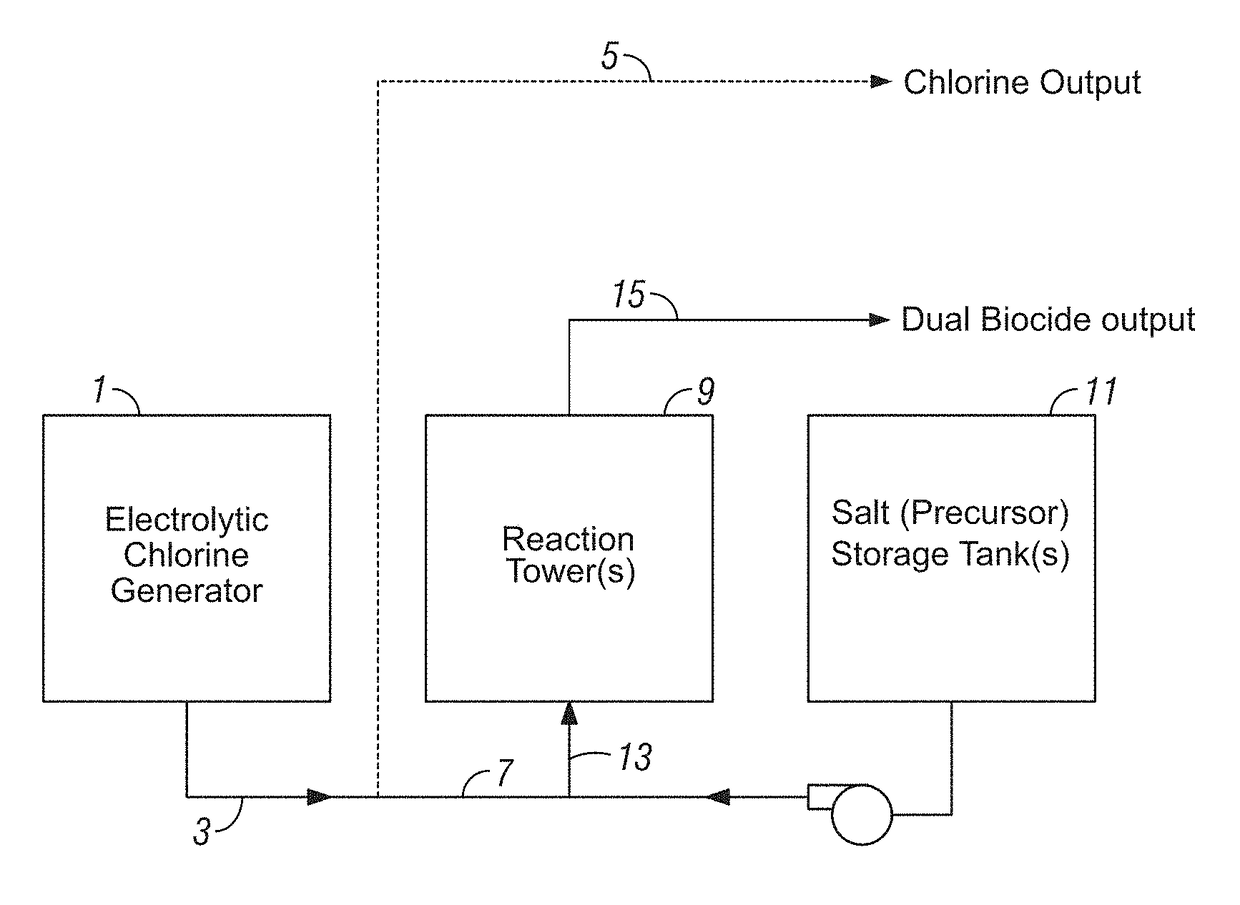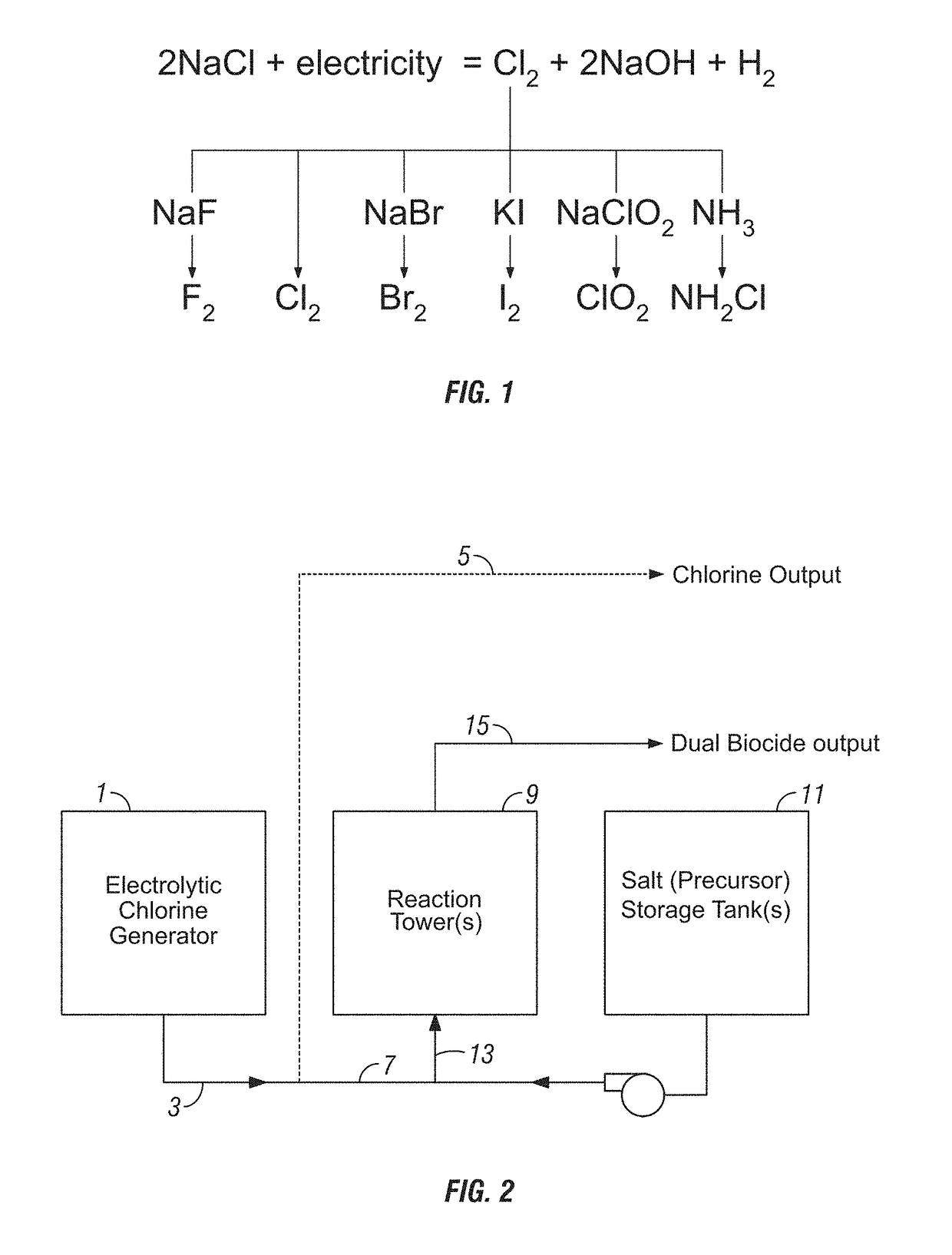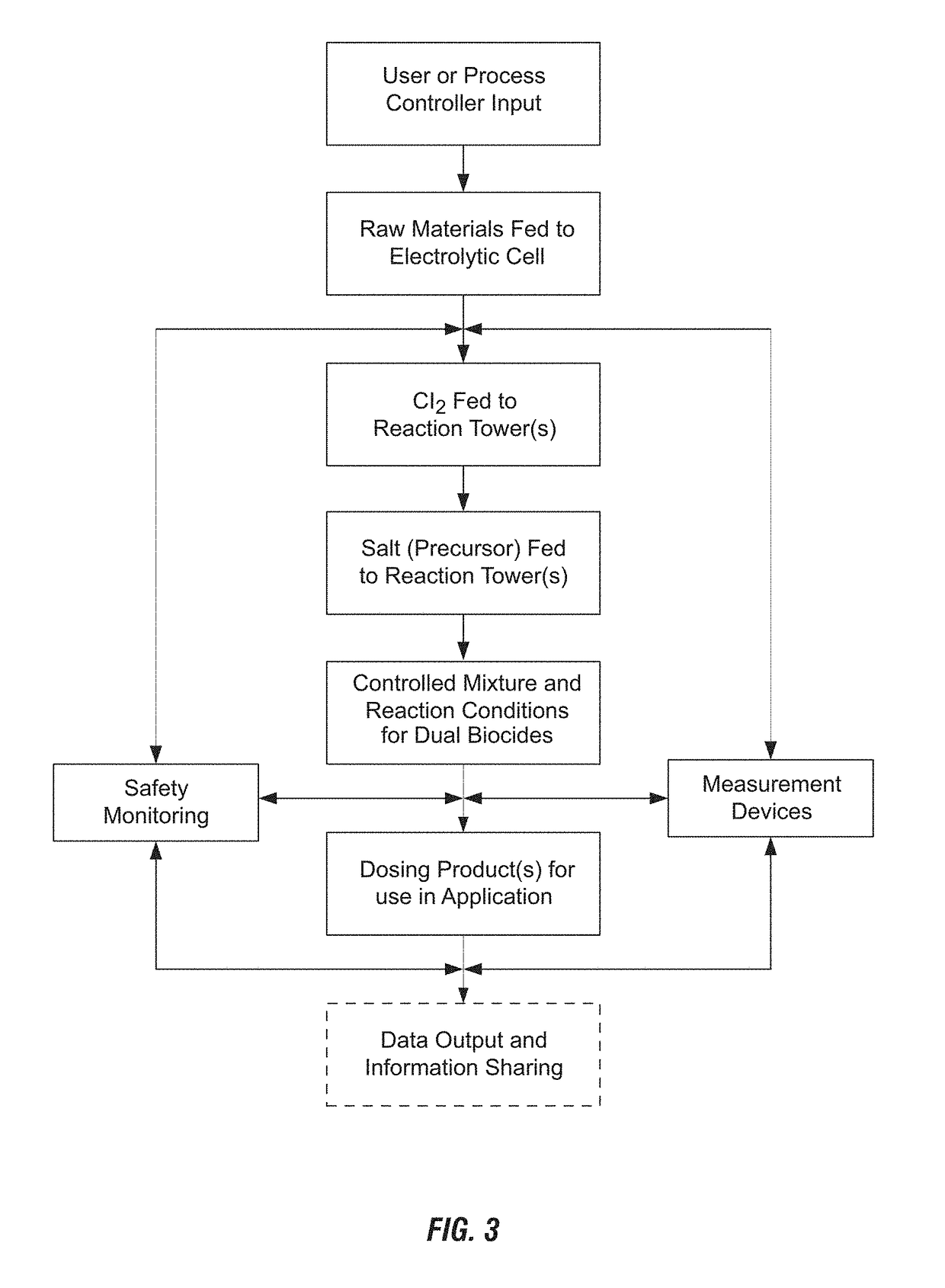Dual biocide generator
a biocide generator and dual technology, applied in the direction of biocide, animal repellents, water/sewage treatment by oxidation, etc., can solve the problems of limited storage of liquid sodium hypochlorite (bleach) solutions, stability and safety concerns, and limitations of chlorine sources as disinfectants, etc., to achieve synergistic
- Summary
- Abstract
- Description
- Claims
- Application Information
AI Technical Summary
Benefits of technology
Problems solved by technology
Method used
Image
Examples
example 1
[0094]The degradation of a 12.5% bleach solution at various temperatures was evaluated to assess storage and transportation limitations associated with convention chlorine biocides. Tables 1-3 show calculations obtained from laboratory studies published in the Journal of the American Water Works Association (Gordon et al., “Predicting Liquid Bleach Decomposition,” J. Am. Water Works Assoc., 89(4), 142-149, 1997).
[0095]
TABLE 1(Degradation of a 12.5% Bleach Solution at 60° F.)ConcentrationDaysLoss in Concentration12.41%70.72%12.32%151.53%12.14%303.04%11.78%605.99%
[0096]
TABLE 2(Degradation of a 12.5% Bleach Solution at 70° F.)ConcentrationDaysLoss in Concentration12.32%71.46%12.13%153.10%11.77%306.11%11.08%6011.85%
[0097]
TABLE 3(Degradation of a 12.5% Bleach Solution at 80° F.)ConcentrationDaysLoss in Concentration12.08%73.51%11.62%157.37%10.80%3014.19%9.34%6026.36%
[0098]As shown, the degradation rate doubles, approximately, for every 10° F. above 60° F. The data in Tables 1-3 demonstra...
example 2
[0101]Electrolytic Sodium Hypochlorite Generation (State of the Art). Sodium hypochlorite was generated using three common consumables: sodium chloride (salt), water and electricity. NSF-60 certified salt pellets were used in the process. The on-site generation system operated by feeding softened water into a brine tank containing salt pellets. The salt dissolved to form a saturated sodium chloride solution, which was further diluted to the desired salt concentration of approximately 13,000 mg / L. The salt solution was then passed through the anode side of the electrolytic cell at a rate of approximately 90 mL / min and water through the cathode side at a rate of approximately 45 mL / min. A DC current of 40 amps was applied to the electrolytic cell to produce elemental chlorine on the anode side and sodium hydroxide and hydrogen gas on the cathode side of the electrolytic cell according to the following reaction:
2NaCl+2H2O→Cl2+2NaOH+H2
[0102]Both streams were combined, forming a sodium ...
example 3
[0105]Electrolytic Chlorine and Chlorine Dioxide Generation. An on-site generation system as described in Example 1 was operated by feeding softened water into a brine tank containing salt pellets (NSF-60 certified salt pellets), forming a saturated sodium chloride solution (diluted to approximately 13,000 mg / L). The salt solution was then passed through the anode side of the electrolytic cell at a rate of approximately 90 mL / min and water through the cathode side at a rate of approximately 45 mL / min. A DC current of 40 amps was applied to the electrolytic cell to produce elemental chlorine on the anode side and sodium hydroxide and hydrogen gas on the cathode side of the electrolytic cell. The effluent streams (elemental chlorine and sodium hydroxide) were not combined in this example; however the apparatus can include an output line for storing the generated chlorine as well as a second output line for transporting the chlorine for combination with salt of the additional biocide f...
PUM
| Property | Measurement | Unit |
|---|---|---|
| concentration | aaaaa | aaaaa |
| concentration | aaaaa | aaaaa |
| thickness | aaaaa | aaaaa |
Abstract
Description
Claims
Application Information
 Login to View More
Login to View More - R&D
- Intellectual Property
- Life Sciences
- Materials
- Tech Scout
- Unparalleled Data Quality
- Higher Quality Content
- 60% Fewer Hallucinations
Browse by: Latest US Patents, China's latest patents, Technical Efficacy Thesaurus, Application Domain, Technology Topic, Popular Technical Reports.
© 2025 PatSnap. All rights reserved.Legal|Privacy policy|Modern Slavery Act Transparency Statement|Sitemap|About US| Contact US: help@patsnap.com



